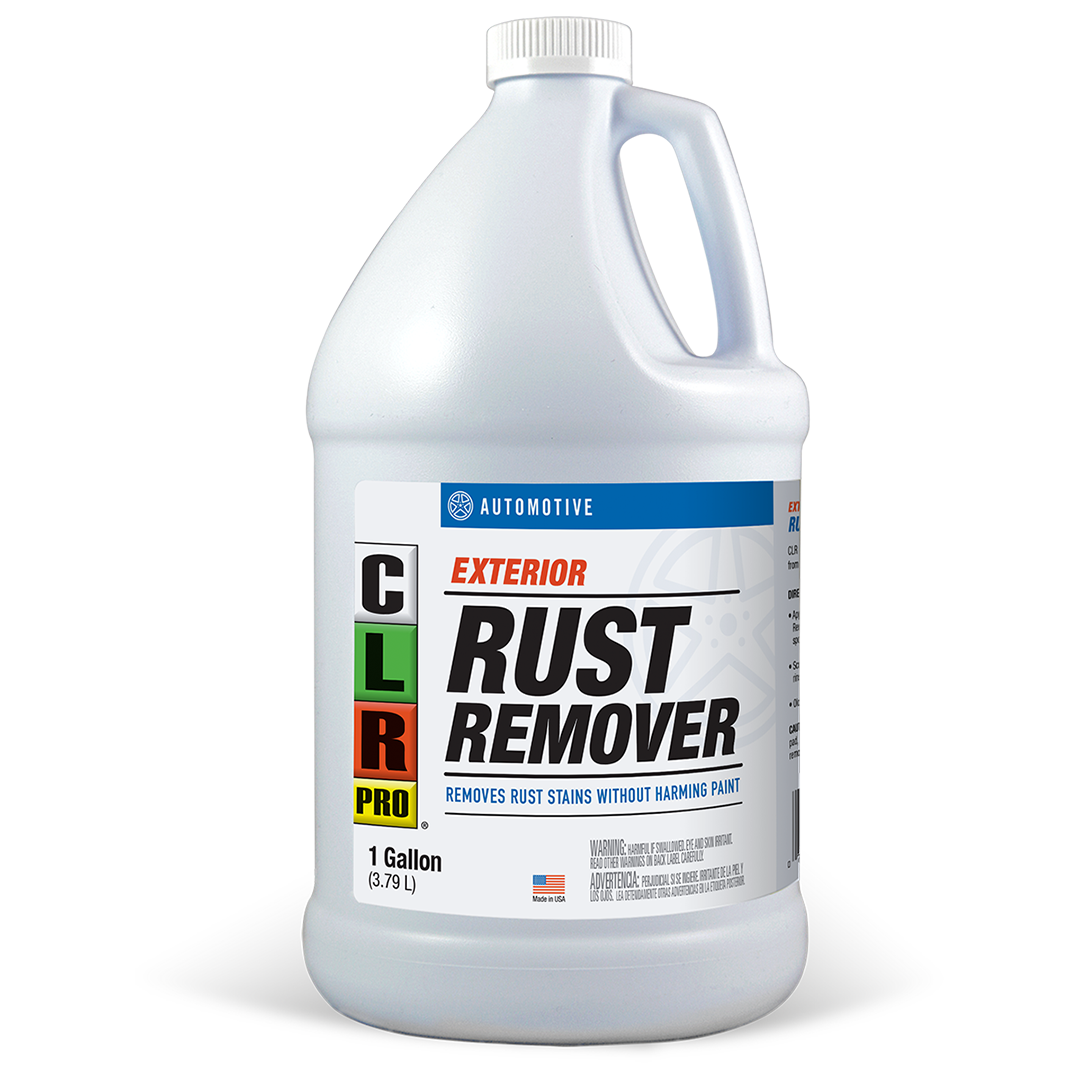
CLR PRO® Exterior Rust Remover
Effectively removes unsightly rust stains and surface corrosion from vehicle exteriors.
- Use for paint prepping and improving the appearance of any vehicle.
- Safe to use on clear coat and paint.
- Contains no phosphates, ammonia or bleach.
- Safe for employees
Great for use on:
Antique Cars, Patina Restoration, Paint Prep, Cars, Trucks, Vans, Heavy Equipment
Effective on these surfaces:
Paint, Rubber, Glass, Vinyl, Aluminum, Chrome, Stainless Steel, PVC/Plastic
Available In:
How to use this product
- Spot test on an inconspicuous area before applying. Dilution and dwell time may vary by soil load.
- Apply directly onto rust stains using a sponge or towel.
- Scrub surface with medium pressure and rinse immediately with clean water.
- Older stains may require a second application.
CAUTION: Using a more aggressive scouring pad, (ie Scotchbrite pads) may enhance the rust removal but will increase the changes of scrating the paint surface. User discretion is advised. Always test a small, hidden area first before proceeding.
Featured Video
Product ingredients


| Water | Dilutent: CAS #7732-18-5 | ||
| Dilutent: CAS #7732-18-5. Reverse Osmosis (RO) is a water treatment process that removes contaminants from water by passing the water through a membrane, (filter), where contaminants are filtered out yielding more pure quality water. | |||
| Lactic Acid | Chelating Agent: CAS #79-33-4. | ||
| Chelating Agent: CAS #79-33-4. Lactic acid is found in many yogurts and cheeses. It is also produced in the muscles during intense activity. Commercially, it is produced by fermentation of simple sugars. In cleaning products it functions as a chelating agent; a compound that makes metals more soluble in water. | |||
| Gluconic Acid | Chelating Agent: CAS #526-95-4. | ||
| Chelating Agent: CAS #526-95-4. This ingredient is an acid formed from the sugar glucose, which naturally occurs in fruit, honey and wine. It is a chelating agent; a compound that makes metals more soluble in water. | |||
| Lauramine Oxide | Surfactant: CAS #1643-20-5. | ||
| Surfactant: CAS #1643-20-5. Used in cleaners to modify the surface tension of water, to aid in even spreading and to allow mixing with oil and dirt so that they can be rinsed away; it is included in many soaps, detergents, and several groups of antiseptics. | |||
| Tripropylene Glycol n-Butyl Ether | Solvent: CAS #55934-93-5. | ||
|
Solvent: CAS #55934-93-5. Used to slow down the evaporation of many liquid products including oven cleaners and inks for ball-point and felt-tip pens. It is very effective at absorbing organic material. California CPRKA Designated Lists (12) US NTP Reproductive or Developmental Toxicants. https://ntp.niehs.nih.gov/publications/monographs/index.html (16) California NLs. https://oehha.ca.gov/water/notification-levels-chemicals-drinking-water (18) California TACs. https://ww3.arb.ca.gov/toxics/id/taclist.htm (20) California Non-Cancer Hazards. https://oehha.ca.gov/air/general-info/oehha-acute-8-hour-and-chronic-reference-exposure-level-rel-summary |
|||
| Yellow No. 5 | Colorent: CAS #1934-21-0. | ||
| Colorent: CAS #1934-21-0. A synthetic lemon yellow dye used all over the world, primarily as food coloring. | |||
| FD&C Blue No. 1 | Colorent: CAS #3844-45-9. | ||
| Colorent: CAS #3844-45-9. A blue dye used for foods and other substances. | |||


